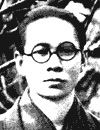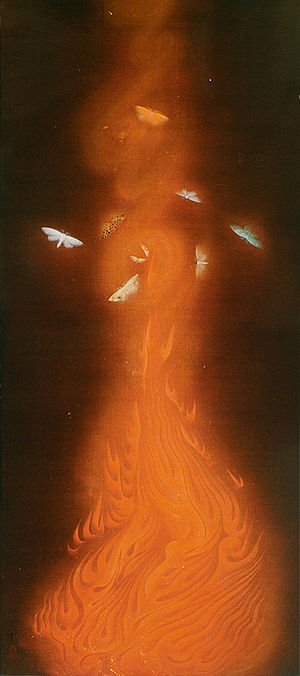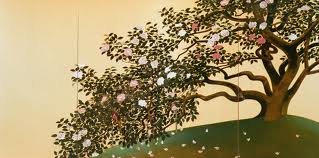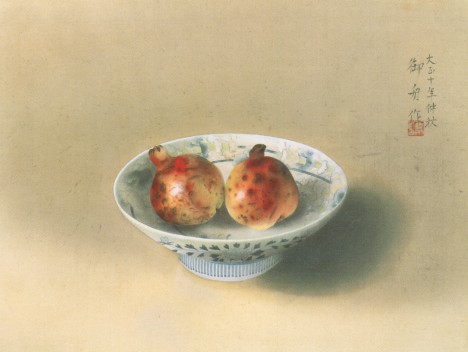Biography of Japanese Painter
Hayami Gyoshu (1894 - 1935)

Japanese-style painter active during the Taisho and Showa eras.
Gyoshu was born in Asakusa of Tokyo city in the 27th year of the Meiji
era as the second son of Makita Ryozaburo.
Gyoshu's real given name was Eiichi.
In 1908, he became a disciple of Matsumoto Fuko and copied out many paintings
of the old Chinese, the Yamato-e and Rimpa styles.
In 1909, Gyoshu became an adopted child of Hayami Kiku.
In 1911, he sent his piece of work to the Tatsumi-Kai Exhibition, and it
was accepted for the first prize, then the work was bought by the Imperial
Household Agency.
In the same year, he entered the Koji-Kai painting association accompanied
with Imamura Shiko.
Gyoshu was influenced much from Imamura Shiko.
In 1913, as the Koji-Kai was disbanded, Gyoshu steped his field of performance
to the Nihon Bijutsu-In (Japan Art Institute).
In 1917, Gyoshu sent his work ("Rakugai Rokudai") to the 4th
Inten Exhibition.
The work was praised highly from Yokoyama Taikan and Shimomura Kanzan,
then, Gyoshu was recommended for a member of the Nihon Bijutsu-In.
In 1919, he was hit by a city train, and, he was forced to cut his left
leg.
In 1921, he married.
In 1930, Gyoshu tripped to European countries and Egypt with Yokoyama Taikan
as an embassy of the Japanese Art Exhibition held in Rome, Italy.
After the return from abroad, he kept seeking new painting styles of expression,
however, he passed away suddenly on March 20 of 1935.
Gyoshu's painting style had kept changing throughout his lifetime.
Loosely, he introduced graphic and minute expression of which we could
not find from the traditional Japanese-style painting.
Later, his style changed to symbolic and decorative one.
People assumed him as a most promising Japanese painter, though, he died
of typhoid fever at the age of 40.



